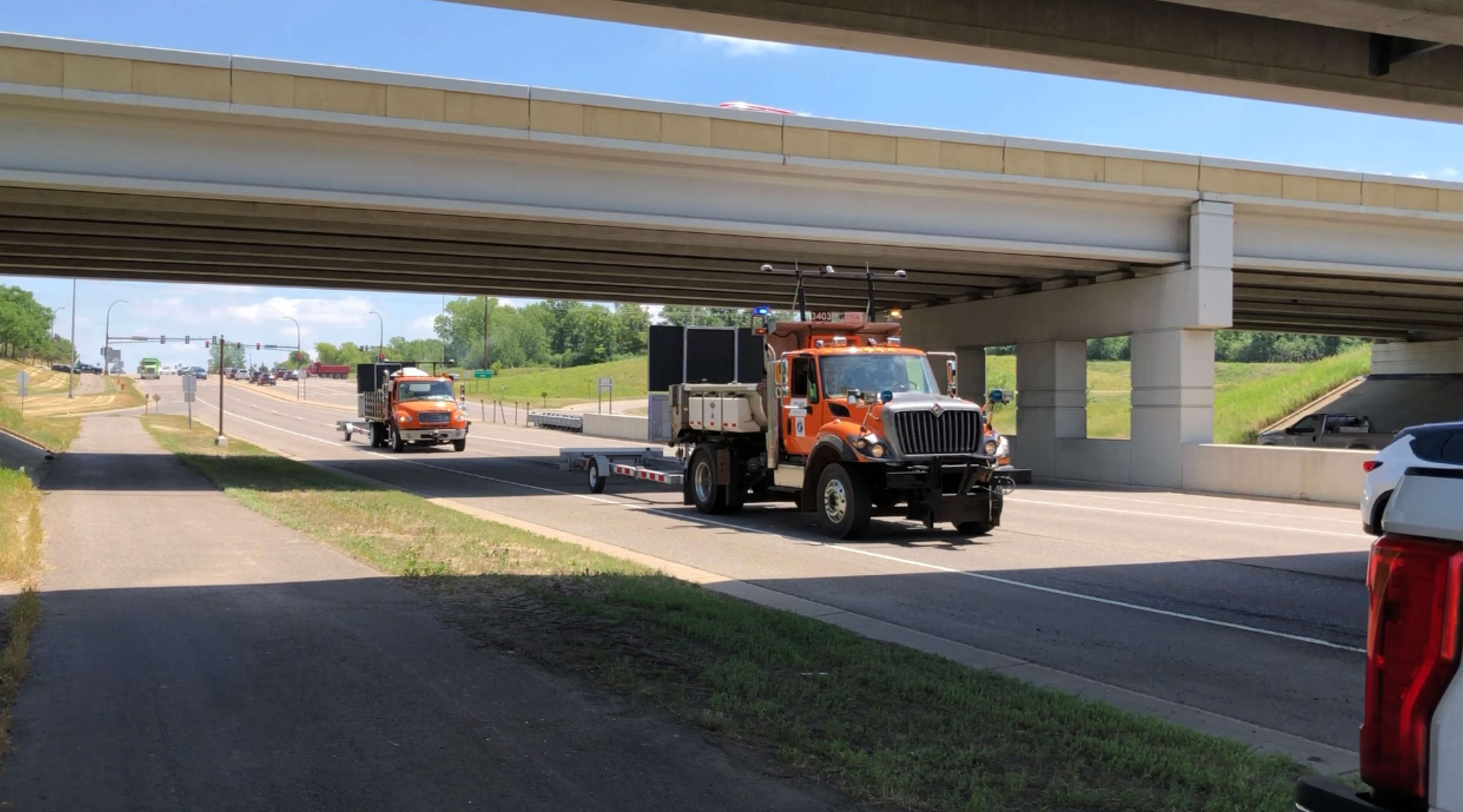Learn more about
CAV technology and safety
Connect with us
MnDOT is focused on safety
CAV technology is already helping to improve safety on Minnesota roadways
Driver assist technology, such as blind spot detection and lane keeping assistance, can help drivers avoid or quickly react to driving errors. Appropriate use of driver assist technology is essential to realize the benefits the technology can offer.
CAV technology has the potential to reduce deaths and serious injuries on Minnesota roadways
Removing human error will have safety benefits for drivers, people bicycling and walking and our broader communities. Ninety-four percent of all serious motor vehicle crashes are due to human error or choices. With technologies already on the market - like blind spot assist and lane keeping assist - and the potential of fully automated fleets in the future, we may be able to cut those deaths significantly. The sensors that allow connected and automated vehicles to operate don't get distracted or impaired like human drivers do. With more than 35,000 people dying in motor vehicle related crashes in the U.S. each year (more than 400 in Minnesota), driver assist technologies and future fully automated vehicles have great life saving potential.
Traditional traffic safety strategies are still needed
CAV technology has the potential to increase safety on Minnesota roadways, but those benefits are likely still years away and may never be fully realized. That's why Minnesota will continue to invest in existing safety strategies and programs focused on making transportation safer for human drivers today and into the future. The Minnesota Strategic Highway Safety Plan identifies the following as core focus areas for traffic safety in the near-term based on data trends: inattentive drivers, impaired roadway users, intersections, speed, lane departure and unbelted vehicle occupants. CAV can be part of the solution to addressing crashes in these areas.
The Minnesota Toward Zero Deaths is the state's cornerstone traffic safety program, employing an interdisciplinary approach to reducing traffic crashes, injuries and deaths on Minnesota roadways. TZD is a partnership of people and organizations throughout Minnesota working to improve traffic safety through engineering, enforcement, education, emergency medical system strategies, of which CAV can be part of. Creating a culture of traffic safety in Minnesota is a priority for MnDOT and TZD. Minnesota CAV partners are prioritizing creating a culture of safety around development, testing and deployment of CAV technology.

MnDOT fleet vehicles featuring Autonomous Truck Mounted Attenuator (ATMA) technology.
CAVs have multiple layers of safety features
The connected and automated vehicles being tested and operating on Minnesota roadways today have multiple layers of safety features - from sensors and braking systems to emergency stop buttons - that help them detect and avoid obstacles, keeping those in and around the vehicle safe. Vehicles use a variety of technologies to perform the same function to build in redundancy to safeguard against potential technology failure. Some vehicles have sensors, cameras, GPS and cellular technology all helping the vehicle "see" the roadway and surroundings.
Testing will help improve CAV safety
Testing in Minnesota will help improve CAV safety moving forward. Minnesota is safely researching and testing many CAV technologies in different settings, especially in Minnesota winter. In 2018 Minnesota was the first state in the country to test these technologies in cold weather and this helped inform the industry to help make sure CAV technology can operate safely in snow. Industry partners incorporated lessons learned from this test in Minnesota to change how vehicles response to winter weather conditions. Minnesota CAV partners conduct safe, off-road testing with partners at MnDOT's MnROAD testing facility. This facility allows newer CAV technology to be tested in a controlled environment. Demonstration projects like the Med City Mover in Rochester, MN help assess the safety of newer technologies. This project will improve how automated vehicles drive in urban settings and winter weather conditions and identify changes to infrastructure needed to safely operate automated vehicles on Minnesota roadways.
Safety is built into CAV demonstrations
Government agencies have safety measures in place for testing and deploying CAV on Minnesota roadways today. Any connected and automated vehicles running on Minnesota roadways must first withstand many levels of review, testing and analysis. Minnesota CAV partners collaborate to ensure all national and state guidance for general vehicle safety, such as seatbelt use and emergency response planning, is met on CAV demonstrations in the state. Minnesota state agencies are working together to identify the laws and policies that exist today that govern traffic safety, and which may need to be adopted in the future as CAV technology continues to advance. The National Highway Safety Administration (NHTSA) requires crash reporting for level 2 to 5 automated vehicles. By monitoring this information, the administration will identify if additional safety measures need to be implemented federally to ensure safety on U.S. roadways as CAV technology continues to be developed and deployed.
Why is CAV important?
Connected and automated vehicles have the potential to provide many benefits to Minnesota residents, businesses and visitors. Explore each section below to learn more about the potential benefits of CAV related to safety, equity, innovation and Minnesota’s economy.


